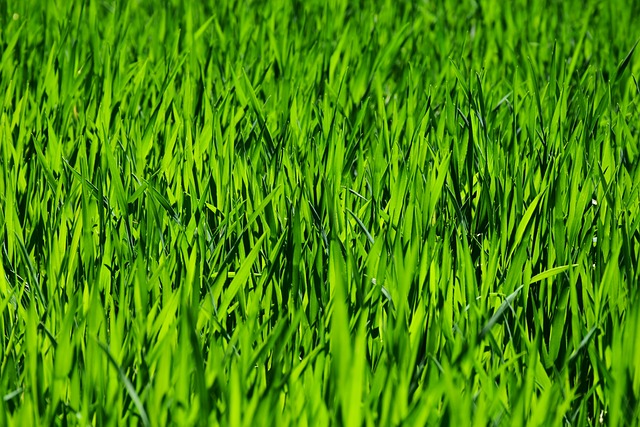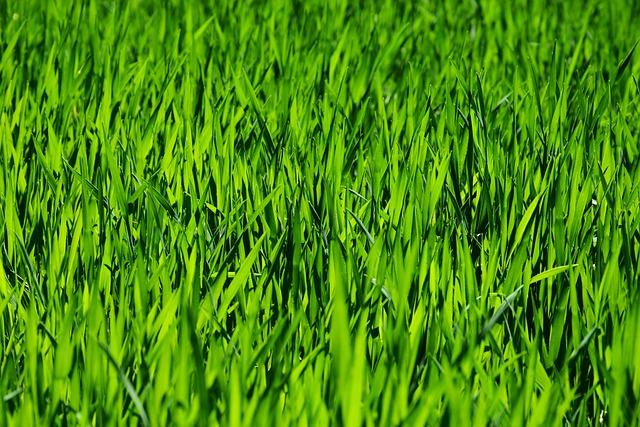To achieve an efficient and sustainable lawn care and landscaping irrigation system, it's essential to consider your lawn's unique characteristics such as soil type, topography, and local climate. Selecting the appropriate irrigation components—whether drip lines for precise watering in garden areas or sprinklers for larger spaces—requires careful planning. Professional guidance is recommended during this phase to ensure a system that conserves water, adapts to environmental conditions, and supports a healthy, lush landscape. Advanced systems can be enhanced with smart controllers that adjust irrigation schedules based on real-time weather data, further improving efficiency and plant health. Homeowners looking for optimal lawn care and landscaping solutions should evaluate various methods like surface, subsurface drip, or sprinkler systems, each with its advantages depending on the terrain and plant types. Consulting with experts in lawn care and landscaping will provide tailored advice to ensure effective water usage and sustained landscaping health, aligning with sustainable practices for a visually appealing outdoor space.
An effective irrigation system is a cornerstone of any well-maintained lawn, ensuring lush greenery and thriving landscapes amidst varying climates. This article delves into the essentials of installing an irrigation system tailored to your lawn’s unique needs. From evaluating water sources and understanding different types of irrigation systems to planning, selecting equipment, and implementing a residential irrigation system with precision, we guide you through every step. Additionally, we explore maintenance strategies that guarantee sustained performance and environmental harmony, all within the realm of lawn care and landscaping. With a focus on customized solutions and water conservation, your lawn will benefit from a robust system designed for optimal efficiency and longevity.
- Assessing Your Lawn's Needs for Effective Irrigation System Installation
- – Understanding Different Types of Irrigation Systems
Assessing Your Lawn's Needs for Effective Irrigation System Installation

When considering the installation of an effective irrigation system for your lawn, it’s imperative to conduct a thorough assessment of your lawn’s unique characteristics and needs. Understanding soil composition, local climate patterns, water pressure, and plant species can significantly influence the design and functionality of your irrigation system. For instance, clay soils retain moisture differently than sandy soils, necessitating varied watering schedules and sprinkler head placements to ensure optimal hydration for your grass and plants. Additionally, the topography of your land, including slopes and low-lying areas, will affect water distribution and runoff. A detailed evaluation can guide the selection of the most suitable irrigation system components, such as drip lines for targeted watering in shrubbery or more robust sprinklers for expansive lawns. By leveraging the expertise of lawn care professionals during this assessment phase, homeowners can ensure their investment yields a verdant, healthy landscape that conserves water and promotes plant health. Landscaping considerations, such as the placement of trees and shrubbery, further dictate the best irrigation strategies to employ, ensuring each part of your yard receives the right amount of water at the right time for optimal growth conditions. Incorporating a well-planned irrigation system into your lawn care regimen is not just about convenience; it’s a strategic approach to maintaining a beautiful, thriving landscape that stands up to environmental challenges and seasonal changes.

An efficient irrigation system is a cornerstone of effective lawn care and landscaping, ensuring that every part of your landscape receives the precise amount of water it needs. The installation of such a system begins with a thorough assessment of your property’s topography, soil composition, and plant varieties present. This allows for the design of a tailored irrigation layout that addresses the specific hydration requirements of your lawn and garden. A well-planned system not only conserves water but also promotes healthy plant growth by delivering consistent moisture. During installation, it’s crucial to select high-quality components, including drip lines, sprinkler heads, and valves, to ensure longevity and reliability. Additionally, integrating a smart controller can further optimize your irrigation system, adapting to weather patterns and watering schedules for peak efficiency and environmental sustainability. Proper installation by skilled professionals is key to reaping the benefits of an advanced irrigation system, which contributes significantly to the overall health and appearance of your lawn and landscaped areas. By investing in a professional-grade irrigation system, you’re making a commitment to maintaining a beautiful, lush landscape that requires less upkeep while promoting eco-friendly practices in lawn care and landscaping.
– Understanding Different Types of Irrigation Systems

When it comes to optimizing lawn care and landscaping, selecting the appropriate irrigation system is paramount for efficient water usage and healthy plant growth. There are several types of irrigation systems available, each designed to cater to different terrain, soil conditions, and plant needs. Surface irrigation, such as flood or border irrigation, is one of the oldest methods, suitable for level terrains where water can be distributed across large areas without complex system installations. Subsurface drip irrigation (SDI), on the other hand, is ideal for precise water application directly to plant roots, minimizing water loss and promoting efficient lawn care. Another option is sprinkler irrigation, which includes systems like rotary and fixed spray heads, designed to cover larger areas with evenly distributed water, making it a popular choice for both residential and commercial landscaping applications. Each system has its advantages and is best utilized in specific environments; understanding the different types of irrigation systems is crucial for effective lawn care and sustainable landscaping practices.
In addition to the type of system, the efficiency of an irrigation setup also depends on factors like water pressure, the scheduling of irrigation cycles, and the design of the layout. Drip irrigation, for instance, can be highly efficient as it delivers water directly to the soil surface near plants, reducing evaporation and runoff. When selecting an irrigation system, it’s important to consider the specific needs of your lawn or landscape, including the types of plants, the size of the area, and the local climate. Consulting with a professional in lawn care and landscaping can provide insights into the best system for your unique situation, ensuring optimal performance and water conservation efforts.
In conclusion, the strategic installation of an efficient irrigation system is a cornerstone of effective lawn care and landscaping. By carefully assessing your lawn’s unique needs and exploring the various types of irrigation systems available, homeowners can ensure their outdoor spaces thrive with minimal water usage. These systems not only promote lush, vibrant lawns but also contribute to sustainable water management practices. Investing in a tailored irrigation solution is a smart step towards maintaining an attractive and healthy landscape all year round.




